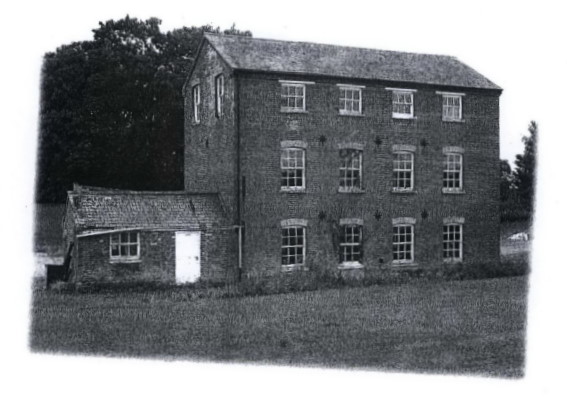Mills and Millers
Forncett End Mills - circa 1914
Mills and Millers
Windmills were a feature of the Forncett landscape for many
centuries. There were mills in Forncett in the 13th century:
"At Forncett in 1279, the Lord's mill produces little by reason of its rickety condition and because hardby there were two mills newly built." Timber Buildings in England - Fred Crossley (Batsford) 1951
...and the last windmill in Forncett was finally dismantled in 1932. Consequently millers have lived and worked in the parish for well over 400 years. On Faden's map of 1797 there are no windmills shown in Forncett, though there are three in nearby Tacolneston. However when Bryant's Map of Norfolk was published thirty years later (1826) there were three mills in Forncett.
The White Mill
This postmill stood behind the Jolly Farmers at Forncett End and was probably built about 1790. It appears to have been owned and operated by the same family of millers, the Knights, from at least 1813 until it collapsed in 1917. A detailed history of the mill can be found here.

The Black Mill
The Black Mill (also sometimes known as Spratt's Mill) was also a postmill. It stood at the crossroads in Forncett End directly opposite Austhorpe House. The mill was apparently built in 1785 and moved to this site around 1805. It continued working until the mid-1920s and was finally demolished in 1932.

The mill was graphically described by Janet Hitchman in her book "The King of the Barbareens", about her time spent living as young girl in Cheney's Lane in 1925.
"Every afternoon I had to plod through the mud to a farm at Forncett End (probably White House Farm) for the milk. At the end of the lane was a windmill, at that time still working. This great monster was anything but beautiful to me, and I have never been able to understand the present generation's sentimentality about windmills. Even at a distance, especially silhouetted against a clear East Anglian sky, I find them frightening and imbued with some kind of evil life. To get the milk I had to pass almost under the sails of the one at Forncett, and no matter how still the day, something about it was always moving. There was a slight wind slithering through the sails and the machinery moaned and creaked so that the whole structure seemed populated by tormented souls. When the wind was high, and the sails working, I used to fear that I should be sucked into their orbit and set whirling round and round until I died. Or again, a sail might break off and cut me in two."
A detailed history of the mill can be found here.
Forncett Smock Mill
Forncett smock mill stood at the cross roads at the top of Mill Lane (now Mill Road) and a windmill is recorded here in the 1565 map of F G Davenport. The smock mill first appears on a map of Forncett (below) published in 1817. It appears to have ceased working sometime between 1883 and 1888, though it was still shown on the Ordnance Survey map published in 1898 and exactly when the smock mill was demolished is not known. A detailed history of the mill can be found here.

Forncett Steam Mills
Unlike windmills, mills driven by a steam engine were capable of grinding all day regardless of the strength of the wind, and by the late 1800s steam-driven roller mills were becoming the most efficient way to produce flour. Over the course of the next quarter century flour milling underwent a radical transformation. These changes were driven by two related factors: the growing demand for white bread and the increased importation of hard wheats from North America, Russia and also Australia and India, to meet demand. These hard wheats gave good quality flours, naturally higher in gluten than native soft wheats, which enabled the production of well-risen white bread. The new roller mills were not only better suited to milling hard wheats than traditional millstones, but they also extracted a greater proportion of fine white flour.

Towards the end of the 19th century two new steam mills were installed in Forncett. The first, Ludkin's Mill, was built around 1883 by Henry John Ludkin and was in Forncett End, near the Methodist Chapel. The second, Grove Mill, was built around 1895 by William Crane and was located at The Grove, not far from Forncett Railway Station. The full histories of both mills can be read by clicking on the links above.
To learn more about the impact of the steam engine, during and after the industrial revolution, why not visit the wonderful Forncett Industrial Steam Museum, open Wednesdays and Sundays throughout the year.
Note: Some of the primary research material for this page came from the Harry Apling Archive (Norfolk Record Office), the Norfolk Mills website, and the Mills Archive.

